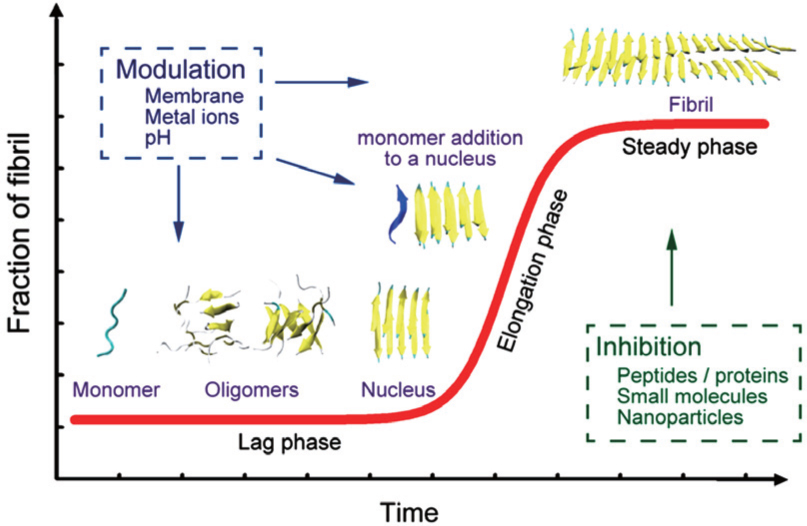A schematic diagram showing the nucleation-dependent polymerization model of amyloid fibril formation. During the lag phase (nucleation), monomeric forms of the amyloid-forming peptides self-aggregate into soluble oligomers (including disordered oligomers,β-barrels, and bilayerβ-sheets) and nuclei. During the elongation phase, the nucleus is extended rapidly and grows into fibrils. Then, fibrillation reaches a stage called the steady phase. Aggregation processes produce a sigmoidal kinetic curve (red) that is depicted in the figure. Many factors can influence this fibrillation process.[26–28] |

